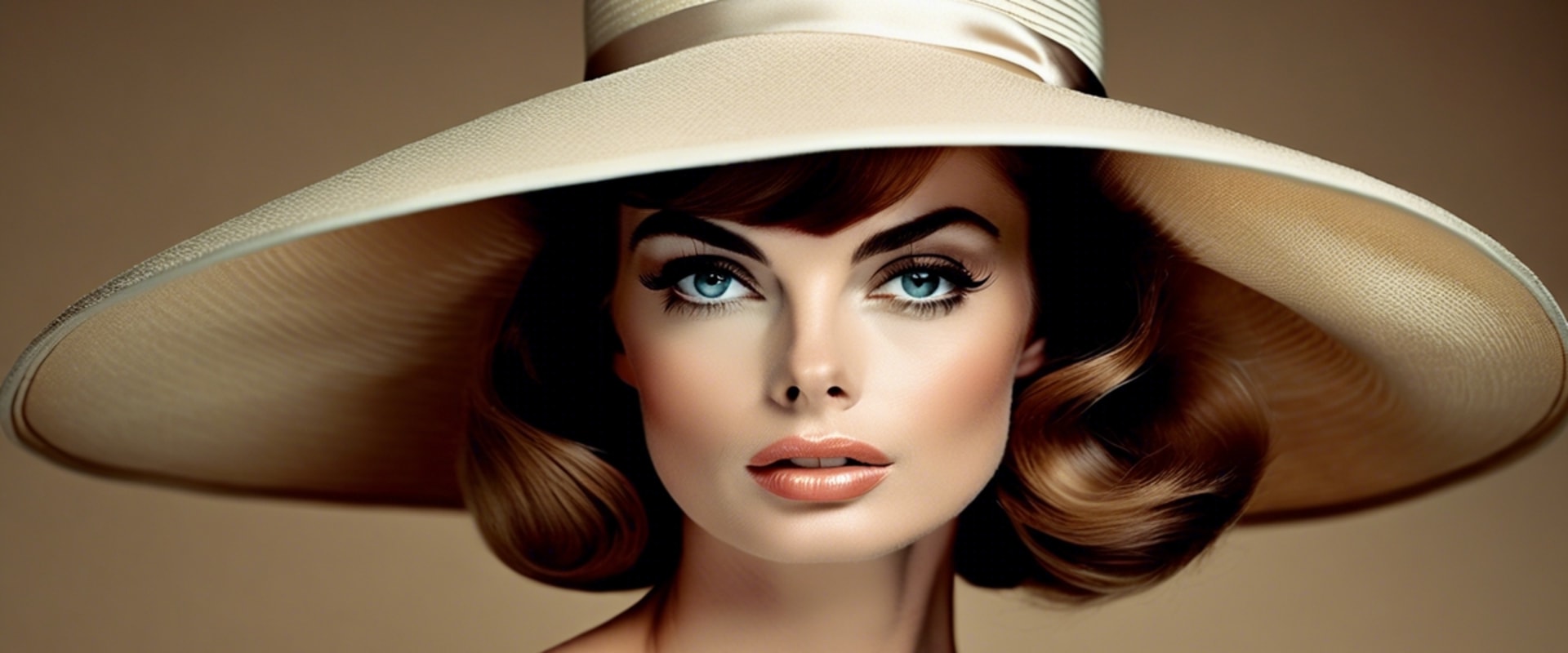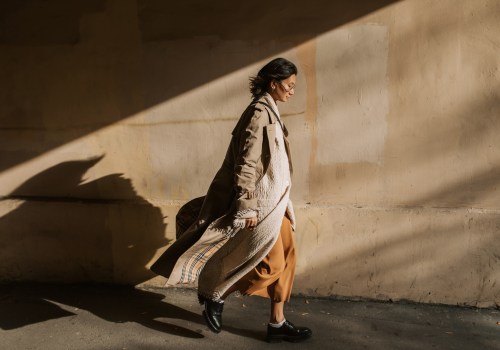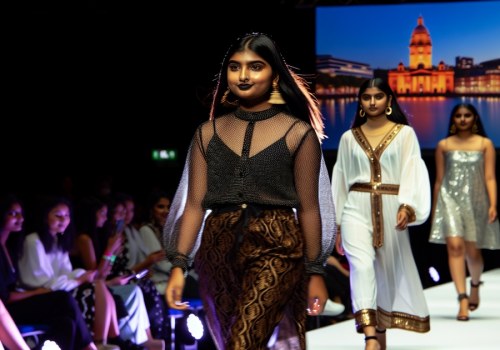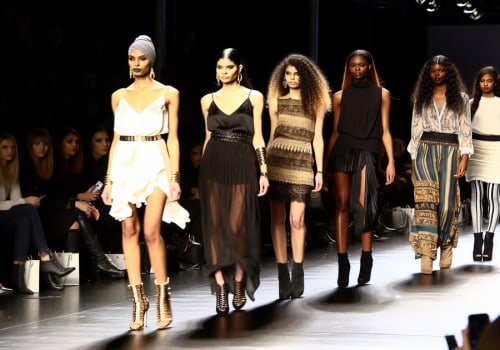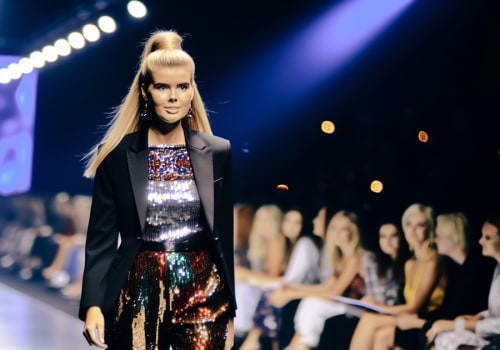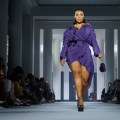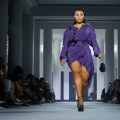Get ready to delve into the captivating world of Jean Shrimpton, an iconic figure in the fashion industry. Known for her effortless style and trailblazing influence, Shrimpton revolutionised the modelling scene in the 1960s. From gracing countless magazine covers to setting new standards for beauty and elegance, she remains a timeless symbol of sophistication and grace.
Her impact extends beyond just fashion; she challenged conventions and redefined what it meant to be a successful woman in a male-dominated industry. Through her enigmatic presence on the runway and in front of the camera, Jean Shrimpton captivated audiences worldwide with her unique blend of confidence and vulnerability. Join us as we unravel the legacy of this pioneering supermodel whose enduring allure continues to inspire generations.
Early Years of Jean Shrimpton
Childhood Insights
Jean Shrimpton, a prominent figure in the fashion industry, spent her early years in High Wycombe. Growing up with three sisters in a close-knit family, she attended St. Bernard's Convent School in Buckinghamshire. Shrimpton's childhood was filled with passion for horse riding and ballet, reflecting her early interests and hobbies.
Her love for horse riding allowed her to develop discipline and determination from a young age. This passion not only provided physical activity but also instilled important values like patience and perseverance. Moreover, it showcased her adventurous spirit as she fearlessly navigated through various equestrian activities.
Her dedication to ballet demonstrated an early commitment to artistic expression and gracefulness. The discipline required for mastering ballet steps honed Shrimpton's focus and precision - qualities that would later contribute to her success as a model.
Modelling Genesis
At the age of 17, Jean Shrimpton was discovered by a photographer who recognized her potential as a model. This encounter marked the beginning of an extraordinary journey into the world of fashion and glamour. Her first modelling assignment for a local newspaper served as an initial stepping stone towards stardom.
Signing with the renowned model agency "Lucie Clayton" opened doors to numerous opportunities within the fashion industry. This pivotal moment propelled Shrimpton into the limelight where she quickly gained recognition due to her unique charm and captivating presence on camera.
Rise to Fame
Iconic Collaborations
Jean Shrimpton's rise to fame was propelled by her iconic collaborations with renowned individuals in the fashion industry. She worked closely with photographer David Bailey, creating numerous groundbreaking shoots that captured the essence of the swinging sixties. Together, they challenged traditional beauty standards and revolutionized the concept of high fashion photography.
Shrimpton also collaborated extensively with fashion designer Ossie Clark, a partnership that not only elevated Clark's career but also solidified Jean's status as a style icon. Their collaboration resulted in stunning creations that epitomized the free-spirited and youthful aesthetic of the era.
Moreover, she played an instrumental role in pioneering the concept of supermodels alongside Twiggy. The duo redefined conventional notions of beauty and femininity, ushering in an era where models were celebrated for their individuality and unique features rather than conforming to established ideals.
These collaborations not only shaped Jean Shrimpton's career but also left an indelible mark on the fashion industry, influencing subsequent generations of models and photographers alike.
Magazine Covers
Jean Shrimpton cemented her status as a fashion icon by gracing the covers of prestigious publications such as Vogue and Harper's Bazaar. Her ethereal beauty and distinctively modern allure captivated audiences worldwide, earning her a place among the most sought-after models of her time.
Setting a record for appearing on more Vogue covers in a single year than any other model before her, Jean Shrimpton became synonymous with elegance and sophistication. Her magazine appearances not only showcased her versatility as a model but also served as powerful statements challenging prevailing beauty norms.
Through these magazine covers, she redefined beauty standards, advocating for diversity and individuality at a time when homogeneity dominated mainstream perceptions of attractiveness. Her influence extended beyond mere aesthetics; it sparked conversations about representation within the fashion industry that continue to resonate today.
In addition to Vogue and Harper’s Bazaar covers mentioned above:
She appeared on numerous other leading magazines' covers including Elle, Glamour etc.
Redefining beauty standards through diverse poses showcasing confidence & independence.
Her presence on these covers signified more than just modelling assignments; each image encapsulated an ethos - one rooted in breaking barriers while embracing authenticity.
The Modelling Experience
Industry Realities
The modelling industry in the 1960s was a fierce and cutthroat world. Models faced immense pressure to maintain an impeccable appearance and work long hours without complaint. Jean Shrimpton's impact on reshaping the industry's approach to models' rights and working conditions cannot be overstated. She challenged the status quo by advocating for better pay, improved working conditions, and greater autonomy for models. Shrimpton's influence led to significant changes in how models were treated, laying the groundwork for more equitable treatment of future generations of aspiring models.
Jean Shrimpton's experiences highlighted the demanding and competitive nature of modelling during that era. Models like her had to navigate through intense competition while facing constant scrutiny over their looks and behaviour. Despite these challenges, she fearlessly spoke out about the need for change within the industry, setting a precedent for future generations of models to demand fair treatment from agencies and clients alike.
Shrimpton's advocacy paved the way for improvements in models' rights across various aspects such as fair compensation, reasonable working hours, access to better healthcare benefits, protection against exploitation, and respect for personal boundaries.
Shrimpton's Perspective
Jean Shrimpton offered candid insights into her views on fame, beauty standards, and navigating through the pressures of the fashion world during interviews conducted throughout her career. Her perspective shed light on both glamorous allure as well as harsh realities associated with being a top model during that period.
In interviews from that time period onwards till today Jean has shared her thoughts about fame saying "I don't think I'm beautiful" which is shocking considering she was one of biggest supermodel names at that time but it shows how even famous people can feel insecure about their looks too!
Her frank discussions also brought attention to societal expectations regarding beauty standards - something she often found overwhelming due its unrealistic demands placed upon women especially those in public eye like hers; this commentary resonates deeply even now when we see similar struggles faced by modern-day celebrities who are constantly scrutinized under media microscope.
Furthermore Jean openly discussed pressures inherent within fashion industry including maintaining certain body measurements & dealing with constant criticism or objectification based solely off physical appearance rather than talent or personality which many still grapple with today despite strides made towards inclusivity & diversity within fashion landscape.
Fashion Icon Status
Miniskirt Revolution
Jean Shrimpton played a pivotal role in popularising and normalising the miniskirt. Her daring hemlines challenged traditional fashion norms, sparking a revolution in women's clothing. By embracing this audacious style, she defied conventions and redefined the boundaries of fashion.
Shrimpton's influence extended beyond her modelling career; it permeated into societal perceptions of femininity and fashion. The miniskirt became synonymous with freedom, self-expression, and empowerment for women across the globe. It represented a shift towards modernity and liberation from conservative sartorial constraints.
Shrimpton's impact on the miniskirt phenomenon was not merely confined to the realm of fashion; it transcended into cultural symbolism, embodying an era of rebellion against conformity. This iconic garment symbolised a new wave of confidence and independence among women, encapsulating the spirit of change that defined the 1960s.
The boldness displayed by Shrimpton through her choice to wear miniskirts paved the way for future generations to embrace their individuality without reservation. Her legacy continues to inspire contemporary designers who seek to challenge established paradigms while celebrating diversity in style.
Swinging London Scene
Embracing the vibrant cultural scene of 1960s London, Jean Shrimpton left an indelible mark on defining "Swinging London" - an era characterised by innovation, creativity, and social upheaval. As one of its leading figures, she embodied its essence through her distinctive style and unapologetic attitude.
Shrimpton's influence resonated throughout every aspect of "Swinging London," from music to art and everything in between. She epitomised a sense of freedom that captivated individuals worldwide as they sought inspiration from this burgeoning cultural epi-centre.
Her embodiment of "Swinging London" went beyond mere aesthetics; it encapsulated a mindset - one that embraced change while challenging conventional ideals. Through her presence at influential events such as The Derby Day photoshoot or her relationship with photographer David Bailey, Shrimpton solidified herself as an emblematic figure amid this transformative period.
The impact she had on shaping "Swinging London" reverberates even today within contemporary culture – serving as both an archetype for creative expression and a testament to breaking free from societal constraints.
Shrimpton's Media Influence
Beauty Icon
Jean Shrimpton, with her ethereal beauty and effortless elegance, has solidified her status as a timeless beauty icon. Her impact on redefining conventional notions of attractiveness is evident in the way she challenged traditional standards of beauty during the 1960s. Shrimpton's delicate features, doe-like eyes, and understated allure captivated audiences worldwide, setting a new benchmark for what was considered beautiful.
Shrimpton's influence extended beyond physical attributes; it encompassed an entire ethos of grace and sophistication that transcended the superficial. Through her modelling career, she redefined beauty by embodying a natural look that celebrated individuality rather than conforming to societal expectations. By doing so, she empowered women to embrace their unique features and reject unrealistic ideals perpetuated by mainstream media.
The enduring appeal of Jean Shrimpton lies in her ability to redefine beauty on her own terms – an enduring legacy that continues to inspire generations of individuals seeking authenticity over conformity.
Cultural Shifts
During the 1960s, Jean Shrimpton mirrored and catalysed significant cultural shifts through her influential presence in fashion and media. This pivotal era witnessed radical changes in attitudes towards fashion, femininity, and individuality – changes that were epitomised by none other than Jean Shrimpton herself.
Shrimpton's embodiment of changing attitudes towards fashion was revolutionary; she embraced daring hemlines, bold patterns, and unconventional silhouettes which defied the conservative norms prevalent at the time. Her fearless approach to style reflected a broader cultural movement characterised by rebellion against established traditions.
Moreover, Jean Shrimpton symbolised shifting perceptions of femininity during this transformative period. With her confident demeanour and unapologetic independence both on- and off-camera, she shattered stereotypes surrounding women’s roles in society. Her nonconformist attitude served as an inspiration for countless women striving for autonomy amidst societal constraints.
In essence, Jean Shrimpton became synonymous with individuality - challenging prevailing norms while championing self-expression.
Personal Life Unveiled
Behind the Glamour
Jean Shrimpton, despite her glamorous public image as a top model, faced challenges behind closed doors. Balancing the demands of her career with personal struggles was an ongoing feat for Shrimpton. The relentless pressure to maintain a flawless appearance and uphold a certain lifestyle often concealed the less glamorous aspects of her life.
Living under constant scrutiny, Shrimpton grappled with the burden of upholding an idealized public persona while navigating private adversities. This delicate balance between maintaining an impeccable facade in the media and dealing with personal challenges sheds light on the intricacies of being in the spotlight.
At times, it's easy to overlook that even individuals who appear to lead charmed lives face their own share of difficulties. For Jean Shrimpton, managing these contrasting facets of her life was undoubtedly demanding and complex.
Despite facing such struggles, Jean Shrimpton remained an influential figure in fashion and culture during her time as a prominent model.
Intimate Revelations
Shrimpton's personal revelations provide candid insights into her experiences navigating love and loss amidst fame. Her relationships, friendships, and challenges encountered throughout her career offer glimpses into a more intimate side of this iconic figure.
Navigating romantic entanglements within the confines of stardom came with its own set of complexities for Jean Shrimpton. The pressures associated with celebrity status often strained personal relationships, shedding light on how fame can impact one's closest connections.
Moreover, grappling with loss while being constantly under public scrutiny added another layer to Shrimpton's journey. Her ability to navigate these deeply personal experiences amid widespread attention showcases both vulnerability and resilience—a testament to human strength amidst life’s trials.
These intimate revelations about Jean Shrimpton’s personal life not only add depth to our understanding but also humanize this renowned icon beyond just what is seen through glossy magazine covers or captivating runway appearances.
Shrimpton and Bailey's Partnership
Breaking Barriers
Jean Shrimpton is renowned for her significant impact on breaking down barriers for future generations of models. Her influence has been pivotal in diversifying beauty standards within the fashion industry. Shrimpton's arrival on the scene marked a turning point, challenging conventional norms and paving the way for greater inclusivity.
Shrimpton's unique look and unconventional approach to modelling revolutionised the industry, setting new standards that transcended traditional ideals of beauty. As a trailblazer, she inspired a generation of models to embrace their individuality and redefine what it means to be beautiful. Her ability to challenge established norms propelled her into an iconic figure whose legacy continues to shape the fashion world today.
The impact of Jean Shrimpton's contributions can be seen in today's diverse representation of models across various ethnicities, body types, and ages. By championing diversity and individuality, she opened doors for aspiring models who didn't fit into the narrow definitions of beauty prevalent at that time.
Shrimpton's lasting influence has reshaped societal perceptions about beauty, empowering individuals to embrace their unique features without conforming to unrealistic standards perpetuated by the fashion industry.
Creative Synergy
Collaborative dynamics between Jean Shrimpton and influential figures in fashion and photography have had a profound influence on shaping creative trends in modelling and style. One such notable partnership was with photographer David Bailey, which resulted in groundbreaking work that redefined fashion photography.
Their collaboration brought forth an era-defining aesthetic that captured the essence of Swinging London during the 1960s. The images produced by Bailey featuring Shrimpton encapsulated a sense of freedom, spontaneity, and raw energy that resonated with audiences worldwide.
The creative synergy between Jean Shrimpton and David Bailey not only elevated both their careers but also left an indelible mark on popular culture. Their work became emblematic of an entire cultural movement characterised by rebellion against tradition—ushering in a new era where creativity knew no bounds.
This partnership not only transformed how models were portrayed but also influenced broader cultural attitudes towards style, self-expression, and femininity.
The Truth About Modelling
Industry Exposé
During Jean Shrimpton's prime years, the modelling industry operated under practices that significantly influenced her career trajectory. At that time, models often faced intense pressure to maintain specific body standards, which could lead to unhealthy eating habits and unrealistic beauty ideals. They were frequently subjected to long hours of work without adequate breaks or compensation.
The fashion world's demands also extended beyond physical appearance. Models like Shrimpton had to navigate a highly competitive environment where they were constantly compared with their peers. This intense scrutiny could take a toll on their mental well-being as they strived to meet the industry's exacting standards.
Shrimpton's experience sheds light on how the industry functioned during her era and provides valuable insights into the challenges she and other models encountered daily. Her journey serves as a testament to the resilience required in an environment where exploitation was prevalent but seldom discussed openly.
Shrimpton's Advocacy
Throughout her career, Jean Shrimpton became an advocate for fair treatment and representation of models within the fashion industry. She used her platform not only to challenge existing norms but also actively worked towards promoting ethical standards for models' working conditions.
By speaking out against unfair practices such as inadequate pay and unreasonable working hours, Shrimpton sought positive change within the industry. Her efforts aimed at creating a more supportive and equitable environment for current and future generations of models.
In addition to advocating for better working conditions, Jean Shrimpton played a pivotal role in challenging conventional beauty standards by embracing natural beauty through her iconic style choices. By doing so, she inspired others in the modelling world to celebrate individuality rather than conforming strictly to established norms.
Legacy in Fashion
Style Evolution
Jean Shrimpton's style evolution spans across several decades, showcasing her influence on fashion trends and aesthetics. In the early years of her career, Shrimpton's iconic look revolutionized the modelling industry. Her preference for clean lines, simple silhouettes, and natural makeup set her apart from the prevailing glamorous standards of that time. As she continued to grace magazine covers and catwalks, her style evolved with the changing times while still maintaining its distinctive essence.
Shrimpton's impact on setting trends is evident in how she redefined beauty standards and challenged conventional notions of fashion. For example, during the 1960s, when opulent ensembles were popular among models and celebrities alike, Shrimpton opted for more understated yet impactful outfits. Her sartorial choices influenced a generation of designers and photographers to embrace minimalism and sophistication over extravagance.
Her later years saw Jean Shrimpton adapting to contemporary styles while retaining elements of her signature look. This adaptability demonstrates not only her versatility but also how she managed to stay relevant throughout the years, leaving an indelible mark on the world of fashion.
Lasting Impact
The enduring legacy left by Jean Shrimpton within the fashion and modelling realms continues to resonate in contemporary culture. Even today, many modern-day models cite Shrimpton as a major source of inspiration for their careers. Her influence extends beyond just clothing; it encompasses an entire attitude towards personal style – one that prioritizes individuality over conformity.
In addition to shaping runway trends, Jean Shrimpton’s lasting impact can be seen in various aspects of popular culture such as films depicting the swinging sixties or retrospectives celebrating iconic fashion moments. Furthermore, contemporary designers often draw inspiration from her timeless elegance when creating new collections or reviving classic looks.
Moreover, publications frequently revisit images from the years when Jean was at the peak of her career as a way to pay homage to this influential figure in fashion history. The fact that these images continue to captivate audiences speaks volumes about Jean Shrimpton's evergreen appeal.
Jean Shrimpton's Written Works
Autobiographical Insight
Jean Shrimpton, a pioneering figure in the fashion industry, provides autobiographical insight into her remarkable life and career. In her autobiography, readers gain a deep understanding of the pivotal moments that shaped her journey to becoming an iconic model. From humble beginnings in High Wycombe to gracing the covers of renowned magazines like Vogue and Harper’s Bazaar, Shrimpton's personal accounts offer invaluable lessons about perseverance, dedication, and breaking barriers.
Shrimpton's autobiography delves into the challenges she faced on her path to success. Her candid storytelling reveals how she navigated through obstacles and setbacks while maintaining unwavering determination. For instance, she shares anecdotes about defying traditional beauty standards of the 1960s, ultimately redefining what it meant to be a fashion model during that era. Through these personal accounts, readers not only learn about Shrimpton's triumphs but also gain insights into overcoming adversity in pursuit of their own goals.
The autobiography also sheds light on Jean Shrimpton’s professional growth within the fashion industry. Readers discover how she cultivated resilience and adaptability as essential traits for thriving in a competitive environment. By recounting her experiences working with esteemed photographers such as David Bailey and Helmut Newton, Shrimpton offers valuable wisdom for aspiring models seeking to navigate their own careers successfully.
Modelling Guidebook
In addition to autobiographical insight, Jean Shrimpton’s written works serve as a modelling guidebook for individuals aspiring to pursue careers in modelling or related fields today. Through her firsthand experiences at the forefront of high-fashion modelling during the Swinging Sixties era in London, Shrimpton imparts timeless principles that remain relevant for modern-day models.
Shrimpton’s guidebook encompasses essential lessons learned from her illustrious career trajectory – from mastering posing techniques to managing hectic schedules during international photo shoots and runway shows. Aspiring models can draw inspiration from Jean Shrimpton’s ability to exude confidence while embracing individuality on camera or on stage.
Moreover, by examining key strategies employed by Jean Shrimpton throughout her modelling tenure – including cultivating strong professional relationships with designers and photographers – budding models can glean practical insights into building their networks within the fashion industry today.
Furthermore,
Embracing authenticity: Models can learn from Jean Shrimpton’s approach towards embracing authenticity rather than conforming solely to conventional standards.
Professional conduct: The guidebook underscores professionalism as an integral aspect crucial for long-term success within modelling careers.
Navigating challenges: Aspiring models will benefit from understanding how Jean Shrimpton overcame challenges unique to both personal growth and professional development.
Reflections on Jean Shrimpton's Influence
60s Fashion Pioneer
Jean Shrimpton is widely recognised as a pioneering figure who played a significant role in defining 1960s fashion trends. Her impact on the fashion industry during this transformative era cannot be overstated. As one of the world's first supermodels, Jean Shrimpton broke traditional style norms and introduced new and innovative looks that captured the spirit of the time. Her influence was not only limited to her captivating presence on runways and in magazines but also extended to challenging societal standards of beauty and femininity.
Shrimpton's iconic images from photo shoots, such as those with photographer David Bailey, showcased her unique ability to embody elegance while pushing boundaries with daring styles. She popularised the mini skirt, making it an emblem of liberation for women worldwide. Her preference for simple lines and natural fabrics revolutionised the way people viewed everyday clothing choices.
Despite being decades since she graced covers of Vogue or walked down catwalks, Jean Shrimpton’s legacy endures through modern reinterpretations of 60s fashion elements in today’s styles. Designers continue to draw inspiration from her timeless looks characterised by clean silhouettes, bold patterns, and statement accessories.
Final Remarks
You've now journeyed through the captivating life of Jean Shrimpton, from her humble beginnings to becoming a trailblazing figure in the fashion industry. Her influence on modelling, media, and fashion continues to reverberate through time, leaving an indelible mark on the world of style and beauty. As you reflect on Shrimpton's legacy, consider how her story can inspire you to fearlessly pursue your passions and break barriers in your own life. Let her journey be a reminder that with determination and resilience, you too can make a lasting impact on the world around you.
So, go forth with renewed inspiration and write your own narrative of success, just like Jean Shrimpton did in her era. Embrace your unique journey, and let it shine brightly for others to admire and draw strength from. Remember, the world is waiting for your story to unfold.
Frequently Asked Questions
Who is Jean Shrimpton and why is she famous?
Jean Shrimpton, a renowned English model from the 1960s, gained fame for revolutionising the fashion industry with her iconic look and influence on Swinging London. Her impact on the modelling world and popular culture continues to be celebrated today.
What was Jean Shrimpton's partnership with David Bailey?
Jean Shrimpton collaborated with photographer David Bailey, creating groundbreaking fashion images that redefined beauty standards. Their work challenged traditional norms and left an indelible mark on the industry.
How did Jean Shrimpton contribute to fashion as a cultural icon?
As a cultural icon, Jean Shrimpton's influence extended beyond her modelling career. She played a pivotal role in shaping Swinging London fashion, setting new trends and inspiring future generations of models and designers.
What are some notable written works by Jean Shrimpton?
Apart from her modelling career, Jean Shrimpton authored "The Truth About Modelling," offering insights into the realities of the industry. Her literary contributions provided valuable perspectives on beauty standards and professional challenges within the field.
How did Jean Shrimpton break barriers in her career?
Jean Shrimpton shattered societal norms by breaking through class ceilings alongside David Bailey. Their collaboration paved the way for a new era in photography and set benchmarks for diversity within both fashion and media industries.
Early Life and Background of Jean Shrimpton
Family and Childhood
Jean Shrimpton was born in High Wycombe, Buckinghamshire, England, on November 7, 1942. She grew up in a picturesque countryside setting with her parents and two sisters. Her father worked as an architect while her mother was a housewife. The family's modest lifestyle instilled in Jean the values of hard work and perseverance from an early age. Despite not having any connections to the fashion industry at that time, her family provided a nurturing environment for her to dream big.
Growing up, Jean Shrimpton enjoyed spending time outdoors amidst the natural beauty of the English countryside. She developed a love for horse riding which eventually led to her discovery by photographer David Bailey at a local racecourse when she was just 17 years old.
Education and Career Beginnings
After completing her education at St Bernard's Convent School in Buckinghamshire, Jean Shrimpton decided to pursue modelling full-time following the fateful encounter with David Bailey. This marked the beginning of an illustrious career that would redefine fashion standards and propel her into international stardom.
At only 18 years old, Shrimpton made waves in the fashion industry with her unconventional looks - particularly during an era dominated by more traditional ideals of beauty. Her slim figure, wide-set eyes, and effortlessly chic style set her apart from other models of that time period.
Rise to Fame
In 1960s London - amidst the cultural revolution known as "Swinging London" - Jean Shrimpton quickly rose to prominence as one of the world's first supermodels. Her iconic photoshoots with renowned photographers such as David Bailey captured not only attention but also controversy due to their boundary-pushing nature.
Shrimpton's most famous moment came during Melbourne Cup Day in Australia when she wore a short white shift dress without stockings or gloves – defying conventional fashion norms prevalent at that time. This bold choice sparked heated debates about femininity and liberation around clothing choices for women globally.
The Career Journey of Jean Shrimpton
Modelling Breakthrough
Jean Shrimpton's modelling career took off in the 1960s, propelling her to international fame. Her breakthrough came when she caught the eye of photographer David Bailey. She quickly became one of the world's first supermodels, gracing the covers of numerous fashion magazines and walking for renowned designers like Yves Saint Laurent and Dior.
Shrimpton's impact on fashion was revolutionary; her signature style redefined beauty standards. With her slender frame, doe eyes, and pixie haircut, she challenged traditional notions of femininity. Her influence extended beyond mere aesthetics; she symbolised a new era in which women were free to embrace their natural elegance rather than conforming to rigid ideals.
Her daring attitude towards modelling set her apart from others in the industry at that time. Shrimpton was unafraid to push boundaries by wearing shorter hemlines and minimal makeup — choices that sparked global trends and reshaped fashion norms.
Iconic Moments
During her illustrious career, Jean Shrimpton had several iconic moments that solidified her status as a trailblazer in the fashion world. One such moment occurred at Melbourne Cup Day in 1965 when she attended an event wearing a white shift dress just above the knee — an unconventional choice for formal events at that time.
This bold move caused quite a stir; it even led to debates about appropriate dress lengths for such occasions! However, this incident marked a pivotal turning point in fashion history as it signalled the rise of mini skirts into mainstream culture.
Another defining moment was when Shrimpton appeared on the cover of Vanity Fair magazine sporting a revealing pink Ossie Clark jumpsuit — an outfit considered scandalous by many but celebrated as empowering by others. These instances not only showcased Shrimpton's fearlessness but also cemented her reputation as someone who challenged societal norms through style expression.
Lasting Legacy
Despite retiring from full-time modelling relatively early compared to some contemporaries, Jean Shrimpton left an indelible mark on both haute couture and popular culture alike. Her legacy lives on through modern-day models who continue to draw inspiration from her timeless allure and nonconformist spirit.
Shrimpton's influence can be seen in today's diverse runway presentations where models with unique features are celebrated rather than being pressured into fitting conventional moulds. Many contemporary designers still reference iconic photographs featuring Jean Shrimpton when conceptualising new collections or seeking creative direction.
Insights into Jean Shrimpton's Personal Life
Early Life
Jean Shrimpton, born on November 7, 1942, in High Wycombe, Buckinghamshire, England, grew up in a small town. Her father worked as an architect while her mother was a former Vogue model. From an early age, Shrimpton showed a keen interest in fashion and style. She attended St Bernard's Convent School and later Langham Secretarial College to study typing and shorthand.
Shrimpton's passion for modelling emerged during her teenage years when she entered and won the "Miss Television" contest at the age of 17. This victory marked the beginning of her remarkable career as one of the world's first supermodels.
As she ventured into modelling full-time after being discovered by photographer David Bailey in the early 1960s, Shrimpton quickly gained fame for her striking looks and unique sense of style that revolutionized the fashion industry during that era.
Rise to Fame
In the mid-1960s, Jean Shrimpton became an iconic figure known for redefining beauty standards with her natural appearance - minimal makeup and long hair - which contrasted sharply with prevailing trends at that time. She graced numerous magazine covers including Vogue UK and US editions while also walking runways for renowned designers such as Yves Saint Laurent.
Her influence extended beyond just appearances; she played a pivotal role in shaping cultural norms around femininity and beauty ideals. For instance, she popularised wearing mini skirts – even causing controversy when attending public events donning shorter hemlines than conventionally accepted.
Impact on Fashion Industry
The impact of Jean Shrimpton's personal life transcended mere glamourous photoshoots; it had profound effects on society’s perception of women’s roles within various industries including fashion. By embracing simplicity over excessive glamorisation typical during that period, she challenged traditional notions about what defined attractiveness or elegance.
This shift led to widespread changes within the fashion industry itself: models began focusing more on personality rather than conforming to rigid beauty standards alone.
In addition to breaking barriers through her distinct look and attitude towards fashion conventions,** Jean Shrimpton** also inspired countless individuals worldwide who sought freedom from societal expectations regarding appearance.
Jean Shrimpton's Influence in the Media
Fashion Icon
Jean Shrimpton's impact on the fashion industry was profound. Her signature style and unique look revolutionized the modelling world, setting new standards for beauty and elegance. As one of the world's first supermodels, Jean Shrimpton transformed the traditional notions of beauty with her striking features and captivating presence. Her influence extended beyond just clothing trends; she redefined what it meant to be a model, inspiring countless individuals to pursue careers in fashion.
Shrimpton's ability to captivate audiences through her photographs made her an icon in the media. Magazines and newspapers clamoured for her images, knowing that they would attract attention and drive sales. She graced numerous covers of popular magazines such as Vogue, Harper's Bazaar, and Elle, becoming a symbol of high fashion and sophistication during the 1960s. The widespread circulation of these publications ensured that Shrimpton became a household name across continents.
Her collaboration with renowned photographers like David Bailey elevated both their careers while also shaping contemporary photography styles. Their work together not only produced visually stunning images but also influenced artistic expression within photography as a whole.
Cultural Impact
The "Shrimp" (as she was affectionately known) played a pivotal role in challenging societal norms regarding femininity and beauty standards. Her non-conformist approach to fashion empowered women to embrace their individuality without succumbing to conventional expectations. By embodying confidence, grace, and independence through her work in front of the camera lens, Jean Shrimpton inadvertently sparked conversations about gender roles at a time when traditional values were being questioned.
In addition to influencing millions with her distinctive style choices on runways around the globe, Jean Shrimpton altered perceptions about women’s roles within society by demonstrating that intelligence could coexist with physical allure.
Enduring Legacy
Even after retiring from full-time modelling several decades ago, Jean Shrimpton continues to inspire designers today through timeless photographs captured during photo shoots or runway appearances. Her legacy is immortalized not only through iconic imagery but also by how she shaped future generations' understanding of what it means to be beautiful inside out.
Notable Books Authored by Jean Shrimpton
Early Life and Influences
Jean Shrimpton, a renowned model of the 1960s, captivated the fashion world with her striking looks and revolutionary style. Born in High Wycombe, Buckinghamshire, in 1942, she was destined for greatness from an early age. Growing up in rural England, Shrimpton developed a deep appreciation for nature and simplicity. This upbringing greatly influenced her future career as a model and author.
Shrimpton's childhood experiences instilled in her a love for storytelling and creativity. Her vivid imagination led her to pen several remarkable books that continue to inspire readers worldwide. Drawing inspiration from the idyllic countryside where she spent her formative years, Shrimpton crafted narratives that transport readers to enchanting worlds filled with wonder and adventure.
The tranquillity of the English countryside served as a backdrop for many of Shrimpton's literary works. Through descriptive prose and evocative imagery, she masterfully captured the essence of nature's beauty within the pages of her books. These captivating descriptions resonate deeply with readers who long to experience the serenity of pastoral landscapes through literature.
Literary Style
Incorporating elements from both fiction and memoir writing, Jean Shrimpton imbues her books with authenticity while infusing them with imaginative storytelling techniques. Her unique blend of real-life experiences intertwined with fictional narratives creates an immersive reading experience that resonates across generations.
The timeless appeal of Shrimpton's writing lies in its ability to evoke nostalgia while simultaneously addressing contemporary themes relevant to today's audience. By seamlessly weaving together personal anecdotes alongside fictional storylines, she offers readers an intimate glimpse into her life while inviting them on captivating literary journeys filled with intrigue and emotion.
Readers are drawn into Shrimpton's world through relatable characters facing universal challenges such as self-discovery, resilience, love, loss, and triumph over adversity. Her empathetic portrayal of human emotions fosters connections between characters and readers alike—forging bonds that endure beyond the final page.
Legacy Through Literature
As an accomplished author whose influence extends far beyond the fashion industry where she initially gained fame, Jean Shrimp ton has left an indelible mark on literature through her compelling body of work. Her contributions have not only enriched libraries but also inspired aspiring writers around the globe. By intertwining personal reflections with fictional narratives, she has created a rich tapestry that continues to captivate audiences across diverse demographics.
The Saturday Interview: Jean Shrimpton's Perspective
Early Life
Jean Shrimpton, often referred to as the "It Girl" of the 1960s, revolutionized the fashion industry with her distinctive style and unconventional approach. Born in England in 1942, she quickly rose to fame as a model, captivating audiences with her effortless elegance and natural beauty. Growing up in a small town, Shrimpton defied traditional standards of beauty and redefined what it meant to be a successful model. Her humble beginnings and determination to break free from societal norms paved the way for her extraordinary career.
Shrimpton's childhood experiences greatly influenced her perspective on fashion and individuality. She embraced simplicity and authenticity, which later became defining elements of her iconic style. Her upbringing instilled in her an appreciation for understated elegance and laid the foundation for her future influence on the fashion world.
Impact on Fashion
The impact Jean Shrimpton had on fashion cannot be overstated. Her collaboration with renowned photographer David Bailey produced some of the most influential images of the era, challenging conventional notions of beauty and femininity. Through their work together, they captured moments that transcended mere photographs; they encapsulated an entire cultural shift.
Shrimpton's ability to embody both sophistication and nonchalance made her a trailblazer in an industry dominated by rigid standards. She effortlessly showcased how classic pieces could be styled in new ways, inspiring countless individuals to embrace their unique sense of style.
Her influence extended beyond just clothing; she reshaped attitudes towards femininity itself by embracing minimalism at a time when opulence was prevalent within high fashion circles.
Legacy
Even decades after gracing countless magazine covers and runways around the world, Jean Shrimpton's legacy continues to resonate within contemporary fashion culture. The ethos she embodied – one that championed individuality over conformity – remains relevant today.
Her impact is evident not only through enduring trends but also through modern models who continue to draw inspiration from her timeless allure.
'The Truth About Modelling' by Jean Shrimpton
Impact on Fashion Industry
Jean Shrimpton's influence on the fashion industry was profound. Her unconventional beauty and effortless style redefined the traditional standards of modelling, paving the way for a new era of modelling. By challenging the status quo, she revolutionised the way models were perceived, shifting the focus from conventional glamour to natural elegance. Shrimpton's impact transcended mere aesthetics; it sparked a cultural shift that celebrated individuality and authenticity over conformity.
Shrimpton's iconic photoshoot with photographer David Bailey at Melbourne's Flemington Racecourse in 1965 encapsulated her revolutionary approach to fashion. In this shoot, she defied norms by wearing a simple white dress instead of an extravagant hat and gloves like other attendees. This bold move not only challenged societal expectations but also reshaped fashion photography by embracing spontaneity and capturing candid moments rather than staged poses.
Her refusal to conform to existing standards set a precedent for future generations of models who sought to break free from restrictive norms. As such, her legacy continues to inspire contemporary models to embrace their unique features and personalities rather than adhering strictly to conventional ideals of beauty.
Empowerment Through Modelling
Shrimpton's career exemplifies how modelling can empower individuals beyond superficial appearances. She used her platform not just as a means for personal success but also as an opportunity to advocate for positive change within the industry itself. By rejecting unrealistic beauty standards and promoting diversity in modelling, she empowered aspiring models worldwide.
Moreover, through her work with various designers and photographers, Shrimpton demonstrated that modelling could be more than just posing for photographs or walking down runways; it could be a form of self-expression and artistry. Her ability to convey emotion through her eyes or body language showcased how modelling could transcend physical appearance alone.
Shrimpton’s influence extended far beyond catwalks and magazines; it reached into mainstream culture where young women looked up to her as an embodiment of confidence, independence, and grace - qualities that went beyond skin-deep beauty.
Evolution of Beauty Standards
Jean Shrimpton played a pivotal role in challenging entrenched notions of beauty during an era dominated by rigid conventions. Her nonconformist attitude towards traditional ideals transformed perceptions about what constituted beauty in both fashion circles and society at large.
By shattering stereotypes surrounding ideal body shapes or facial features commonly associated with high-fashion modeling at that time, Shrimpton broadened society’s definition of attractiveness while inspiring many others along the way. She proved that true allure lay not in adhering strictly to prevailing standards but rather in embracing one’s distinctiveness without reservation.
Exploring the Iconic Beauty of Jean Shrimpton
Early Life
Jean Shrimpton, often referred to as the "Face of the '60s," was born in High Wycombe, Buckinghamshire, in 1942. Growing up, she exhibited a natural flair for fashion and style. Her journey into modelling began when she was discovered by a photographer while attending the Epsom Derby with her then-boyfriend. This chance encounter catapulted her into the world of high fashion and glamour.
Shrimpton's unconventional beauty and effortless elegance set her apart from other models of her time. She became known for her slender figure, doe eyes, and signature haircut that would later be dubbed the "Shrimp" cut. Her impact on fashion extended beyond just trends; it signified a shift towards a more natural and youthful look that revolutionized the industry.
Modelling Career
At only 17 years old, Shrimpton made history by becoming one of the world's first supermodels. She graced numerous magazine covers including Vogue and Harper's Bazaar, solidifying herself as an international icon. Her collaboration with renowned photographers such as David Bailey produced some of the most iconic images in fashion history.
Shrimpton's influence went far beyond aesthetics; she embodied independence and confidence at a time when traditional notions of femininity still prevailed. By challenging conventions through her work, she inspired countless individuals to embrace their individuality without conforming to societal norms.
Her impact wasn't limited to just modelling; it transcended into popular culture influencing music, art, film - essentially shaping an entire era.
Legacy
Jean Shrimpton not only redefined beauty standards but also paved the way for future generations of models who sought to break barriers within an industry steeped in tradition. Her legacy endures through timeless photographs that continue to inspire contemporary creatives globally. In essence, Jean Shrimpton is more than just a model - she represents an era-defining cultural shift that continues to resonate today.
The Impact of Jean Shrimpton on Swinging London Fashion
Revolutionary Modelling
Jean Shrimpton's influence on the fashion industry was revolutionary. Her introduction to the modelling scene in the 1960s heralded a new era of youthful, fresh energy that transformed the traditional standards of beauty and style. With her iconic pixie haircut, doe eyes, and slender frame, she redefined what it meant to be a fashion model. Shrimpton's impact extended beyond her physical appearance; her confident yet effortless demeanor challenged the prevailing notions of elegance and femininity.
Shrimpton's unconventional approach to modelling captivated audiences worldwide. She effortlessly blended sophistication with an air of nonchalance, setting a new standard for modern, relatable glamour. Through her work with renowned photographers such as David Bailey and Richard Avedon, she became synonymous with the "Swinging London" movement—a cultural revolution that celebrated individuality and freedom of expression through fashion.
Shrimpton's ability to embody both elegance and rebellion made her an emblematic figure in an era defined by social change. Her influence transcended mere aesthetics; it encapsulated a spirit of liberation that resonated with women seeking to break free from societal norms.
Redefining Fashion Standards
Jean Shrimpton played a pivotal role in redefining traditional fashion standards by embracing minimalism and simplicity. Her preference for clean lines, understated elegance, and natural beauty set her apart from previous models who adhered to more ornate styles.
Shrimpton's impact on Swinging London Fashion was evident in various aspects such as hemlines—her penchant for shorter skirts challenged conservative dress codes prevalent at the time. This departure from conventional attire signified a shift towards liberation and self-expression through clothing choices.
Moreover, Shrimpton's collaboration with designers like Mary Quant popularised mod-inspired garments characterised by geometric patterns, bold colours, and playful silhouettes—an aesthetic that embodied youthful exuberance while defying established sartorial norms.
Her influence also extended beyond clothing trends; Jean Shrimpton’s affinity for natural makeup highlighted her commitment to celebrating authenticity over artifice—a stark departure from the heavily made-up looks favoured by previous generations.
Enduring Legacy
Decades after gracing countless magazine covers and runways around the world, Jean Shrimpton’s enduring legacy continues to inspire contemporary fashion icons. Her pioneering spirit is echoed in today’s emphasis on individuality, comfortable chicness, and unapologetic self-expression.
By embodying these timeless values, Shrimp ton remains an influential force whose impact reverberates throughout modern fashion.
The Evolution of an Icon: Jean Shrimpton's Early Life
Early Years
Jean Shrimpton, born on November 7, 1942, in High Wycombe, Buckinghamshire, England, grew up to become a trailblazing figure in the fashion industry. Her journey commenced in the picturesque English countryside where she developed a love for horses and sports. Despite her initial reluctance towards modelling due to her shy nature, Shrimpton's distinctive features and ethereal beauty caught the eye of renowned photographer David Bailey. This encounter marked the beginning of her meteoric rise to fame as one of the world's first supermodels.
Throughout her early years, Shrimpton displayed an innate sense of style and elegance that set her apart from others. Her unique ability to effortlessly blend high fashion with everyday wear revolutionised the industry by challenging traditional norms and paving the way for modern trends.
Modelling Career Beginnings
At just 17 years old, Jean Shrimpton made waves in London during what was known as "The Swinging Sixties." She quickly became synonymous with this iconic era through her collaborations with esteemed designers such as Mary Quant and photographers like Terence Donovan. As she graced magazine covers and catwalks across the globe, Shrimpton's influence extended beyond just fashion; she embodied a spirit of liberation and individuality that resonated deeply with young women around the world.
Her impact on popular culture was immense; it wasn't solely about clothes but also about attitude - a carefree spirit that encapsulated an entire generation seeking change.
Cultural Impact
During this period when societal norms were being challenged at every turn - be it music or art - Jean Shrimpton emerged as a symbol of rebellion against conventionality within both fashion circles and society at large. Her refusal to conform to established standards not only redefined beauty but also inspired countless individuals to embrace their uniqueness without reservation.
In addition to influencing trends on runways worldwide, Shrimpton's unconventionality encouraged women everywhere to break free from restrictive sartorial customs. She epitomised freedom from constraints through her nonchalant yet elegant demeanour which captivated audiences globally.
A Pioneering Career: Jean Shrimpton's Achievements
Revolutionary Modelling Techniques
Jean Shrimpton revolutionized the modelling industry with her unique approach. She was among the first models to break away from traditional posing styles, opting for a more natural and relaxed look. This departure from the rigid, contrived poses of the time set a new standard for authenticity in fashion photography. Shrimpton's ability to exude elegance while appearing effortlessly casual became her trademark.
Her influence extended beyond just posing; she also challenged conventional beauty standards. With her understated makeup and simple hairstyles, she redefined what it meant to be beautiful in an era dominated by heavy makeup and elaborate coiffures. By doing so, she paved the way for a more diverse range of looks within the modelling industry.
Shrimpton's impact can still be seen today as models continue to emulate her style of effortless grace and natural beauty.
Iconic Fashion Moments
Throughout her career, Jean Shrimpton played a pivotal role in shaping some of fashion's most iconic moments. One such moment was at Melbourne's Derby Day in 1965 when she wore a white shift dress that caused a sensation worldwide. The dress was designed by Colin Rolfe and featured a shorter hemline than customary at that time, leading it to be dubbed "The Mini Dress." This bold choice sparked an international trend towards shorter hemlines, forever altering women’s fashion.
Another significant contribution came through her collaboration with photographer David Bailey during their trip to New York City in 1962. Their work together produced images that captured the essence of Swinging London – images that are now considered emblematic of an entire era.
Enduring Legacy
Jean Shrimpton’s influence on fashion has had lasting effects on subsequent generations of models and designers alike. Her unconventionality set new standards for what it means to be beautiful, inspiring future generations to embrace individuality rather than conforming to established norms.
Even after retiring from full-time modelling, Shrimpton continued working with various brands as well as contributing significantly towards charity work related to animal welfare causes - showcasing not only her enduring relevance but also highlighting broader social issues beyond just fashion.
Revolutionising Fashion: The Legacy of the Miniskirt and More
Fashion Icon
Jean Shrimpton's influence on fashion is unparalleled. Her introduction of the miniskirt in the 1960s revolutionized the industry, challenging traditional norms and paving the way for modern trends.
Shrimpton's daring style and fearless attitude towards fashion opened doors for future generations of models and designers. She became a symbol of liberation, inspiring women to embrace their individuality and challenge societal expectations.
Her iconic photographs, especially those taken by David Bailey during the 1960s, captured her unique allure and timeless elegance. These images continue to inspire contemporary fashion photography, setting a standard that remains relevant today.
Cultural Revolution
The impact of Jean Shrimpton extended beyond just clothing; she played a pivotal role in shaping an entire cultural movement. Her embodiment of freedom and self-expression resonated with young people around the world, influencing art, music, and attitudes towards gender roles.
Shrimpton's rejection of conservative dress codes sparked conversations about femininity and empowerment. By defying conventional hemlines with the miniskirt, she challenged societal constructs while empowering women to embrace their bodies without restraint.
Her influence transcended boundaries, contributing to a shift in societal perceptions about beauty standards and personal expression. The ripple effect from her actions continues to be felt across various aspects of contemporary culture.
Enduring Legacy
Jean Shrimpton's legacy endures through her lasting impact on both high fashion and popular culture. Her contributions have left an indelible mark on runways worldwide as well as in everyday wardrobes.
The enduring popularity of the miniskirt stands as a testament to Shrimpton's ability to shape long-lasting trends that transcend fleeting fads. Decades after its inception, this garment remains an emblematic piece that embodies freedom, confidence, and progressive values - all synonymous with Jean Shrimpton herself.
Unveiling the Personal Life of Jean Shrimpton
Early Life
Jean Shrimpton, often referred to as the "It Girl" of the 1960s, was born in High Wycombe, Buckinghamshire. Growing up in a working-class family, Shrimpton's life took a dramatic turn when she was discovered by photographer David Bailey at the age of 17. This encounter marked the beginning of her meteoric rise to fame as one of the world's first supermodels. Her humble beginnings and rapid ascent into stardom serve as an inspiration for many aspiring models today.
Shrimpton's upbringing in a modest household and her subsequent catapult into international stardom highlight how talent and opportunity can intersect unexpectedly. Her journey from obscurity to global recognition underscores that success knows no boundaries when true potential meets with fortuitous circumstances.
Career Peaks
During her career peak, Jean Shrimpton graced numerous magazine covers and walked runways for renowned designers such as Mary Quant and Yves Saint Laurent. Her iconic images captured by leading photographers like David Bailey revolutionized fashion photography during the swinging '60s era. Shrimpton's influence extended beyond just modelling; she became synonymous with breaking traditional norms through her bold fashion choices.
Her impact on fashion transcended mere trends; it reshaped societal perceptions about femininity and beauty standards. The way she effortlessly carried herself in miniskirts challenged conventional notions of modesty while empowering women to embrace their individuality without conforming to societal expectations.
Personal Relationships
Despite being an enigmatic figure on camera, Jean Shrimpton guarded her personal life fiercely away from public scrutiny. However, her high-profile romantic involvement with actor Terence Stamp captivated media attention during their time together in the 1960s London scene. Their relationship not only fascinated fans but also symbolized an era where celebrity power couples dominated headlines across tabloids worldwide.
The intrigue surrounding Shrimpton's private affairs showcases how public figures navigate personal relationships under intense media glare while striving to maintain autonomy over their own lives amidst relentless public interest.
Breaking the Class Ceiling: David Bailey & Jean Shrimpton's Collaboration
Iconic Modelling Career
Jean Shrimpton's iconic status in the world of fashion and photography is unparalleled. Her collaboration with photographer David Bailey revolutionized the industry, breaking traditional norms and setting new standards for beauty, style, and creativity. Shrimpton's distinct look, characterized by her slender frame, doe eyes, and signature haircut, challenged the prevailing notions of conventional beauty. Her influence extended beyond mere aesthetics; she embodied a spirit of independence and nonconformity that resonated with an entire generation.
Shrimpton's modelling career was not just about posing for photographs; it was a cultural statement that redefined what it meant to be beautiful in an era dominated by rigid standards. She became a symbol of liberation from the constraints imposed by societal expectations – a beacon of change that empowered women to embrace their individuality without fear or hesitation.
The impact of Jean Shrimpton's work reverberates through time – her images continue to inspire contemporary photographers, models, designers, and artists alike. The essence of her legacy lies not only in her physical appearance but also in the profound shift she ignited within the fashion industry.
Pioneering Collaborations
David Bailey & Jean Shrimpton’s partnership marked a pivotal moment in both their careers as well as in the history of fashion photography. Their collaborations transcended mere professional alliances; they were transformative encounters that birthed some of the most iconic images ever captured on film.
Bailey’s raw talent behind the lens found its perfect match in Shrimpton’s natural charisma before it - together they created visual narratives that defied conventions while encapsulating an unapologetic sense of freedom. Their work epitomised a departure from posed stiffness towards candid spontaneity - capturing moments rather than manufactured perfection.
Their joint efforts led to groundbreaking editorials for renowned publications such as Vogue - each photograph serving as a testimony to their collective ability to challenge existing norms while shaping new ones simultaneously.
The chemistry between Bailey and Shrimpton went beyond professional boundaries; it was rooted in mutual inspiration where each fed off one another’s energy resulting in timeless masterpieces etched into history books forevermore.
Enduring Influence
Jean Shrimpton continues to exert an enduring influence on modern-day fashion trends despite having retired from active modelling decades ago. Her distinctive style has been emulated countless times over by subsequent generations - evidence enough that her impact remains undiminished even today.
Shrimpton’s trailblazing approach has become emblematic within pop culture references too: films set during 1960s London often feature characters inspired directly or indirectly by her persona.
Key Takeaways
Understanding Jean Shrimpton's Influence: Jean Shrimpton's impact on the fashion industry and media was profound, revolutionising the concept of beauty and style.
Embracing Authenticity: Shrimpton's partnership with David Bailey and her candid writing unveiled the truth about modelling, encouraging authenticity in the industry.
Legacy in Fashion: Shrimpton's legacy lives on through her iconic contributions to fashion, including popularising the miniskirt and shaping the Swinging London era.
Personal Empowerment: Readers can draw inspiration from Shrimpton's journey, embracing personal empowerment and breaking societal barriers.
Appreciating Historical Significance: Exploring Jean Shrimpton's influence offers a unique glimpse into the evolution of fashion and media during the Swinging Sixties.
Championing Individuality: Shrimpton's story encourages individuals to embrace their uniqueness and challenge traditional norms in pursuit of their aspirations.
